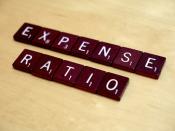Master Budget � PAGE �2�
ACG420- Managerial Accounting & Organizational Controls
�
Victoria Kite Company
Master Budget
Schedule a- Sales Budget | ||||||||
December | January | February | March | Jan-Mar Total | ||||
Sales Budget | ||||||||
Credit Sales - 100% | $25,000.00 | $62,000.00 | $70,000.00 | $38,000.00 | $170,000.00 | |||
Plus Cash Sales - 0 % | ||||||||
Total Sales | $25,000.00 | $62,000.00 | $70,000.00 | $38,000.00 | $170,000.00 | |||
Schedule b: Cash collections from customers | |||||
December | January | February | March | Total | |
Cash Sales | $25,000 | $62,000 | $70,000 | $38,000 | $170,000 |
Collections from prior month | $25,000 | $62,000 | $70,000 | $38,000 | $170,000 |
Total Collections | $50,000 | $124,000 | $140,000 | $76,000 | $340,000 |
Schedule c- Purchases Budget | ||||||
December | January | February | March | |||
Desired ending inventory | 39050 | 6000 | 6000 | 6000 | ||
Plus cost of goods sold | $12,500.00 | $31,000.00 | $35,000.00 | $19,000.00 | ||
Total needed | $51,500.00 | $37,000.00 | $41,000.00 | $25,000.00 | ||
Less beginning inventory | $16,000.00 | $39,050.00 | $8,050.00 | $6,000.00 | ||
Total purchases | 35550 | 0 | 32950 | 19000 |
Schedule d - Cash disbursements for purchases | ||||||
November | December | January | Total | |||
For October | $35,550.00 | $35,550.00 | ||||
For November | $0.00 | $0.00 | $0.00 | |||
For December | $32,950.00 | $32,950.00 | $65,900.00 | |||
For January | $19,000.00 | $19,000.00 | ||||
Total disbursements | $35,550.00 | $32,950.00 | $51,950.00 | $120,450.00 |
Schedule e: Operating expense budget | |||||
January | February | March | |||
Wages (fixed) | $15,000.00 | $15,000.00 | $15,000.00 | ||
Misc expenses | $2,500.00 | $2,500.00 | $2,500.00 | ||
Rent (fixed) | $250.00 | $250.00 | $250.00 | ||
Rent (variable, 10% of sales over 10,000) | $5,200.00 | $6,000.00 | $2,800.00 | ||
Insurance expired (fixed) | $125.00 | $125.00 | $125.00 | ||
Depreciation (fixed) | $250.00 | $250.00 | $250.00 | ||
Total | $23,325.00 | $24,125.00 | $20,925.00 |
Schedule f : Disbursements for operating expenses | |||||
January | February | March | |||
Wages (fixed) | $15,000.00 | $15,000.00 | $15,000.00 | ||
Cash dividends (quarterly fixed) | $1,500.00 | ||||
Misc expenses | $2,500.00 | $2,500.00 | $2,500.00 | ||
Misc fixtures | $3,000.00 | ||||
Rent (fixed) | $250.00 | $250.00 | $250.00 | ||
Rent (variable, 10% of sales of 10,000) | $5,200.00 | $6,000.00 | $2,800.00 | ||
Insurance expired (fixed) | $125.00 | $125.00 | $125.00 | ||
Depreciation (fixed) | $250.00 | $250.00 | $250.00 | ||
Total disbursements | $5,825.00 | $6,625.00 | $8,925.00 |
Cash Budget | |||||
January | February | March | |||
Beginning cash Balance | $5,000.00 | $5,000.00 | $7,083.00 | ||
Minimum cash balance desired | $5,000.00 | $5,000.00 | $5,000.00 | ||
Available cash balance | $0.00 | $0.00 | $2,083.00 | ||
Cash receipts and disbursements | |||||
Collections from customers | $124,000.00 | $140,000.00 | $76,000.00 | ||
Payments for merchandise | $31,000.00 | $35,000.00 | $19,000.00 | ||
Operating expenses | $23,000.00 | $24,000.00 | $20,000.00 | ||
Equipment purchases | $0.00 | $0.00 | $3,000.00 | ||
Dividends | $1,500.00 | $0.00 | $0.00 | ||
Net cash receipts & disbursements | $68,175.00 | $80,875.00 | $33,075.00 | ||
Ending cash balance | $68,175.00 | $80,875.00 | $30,992.00 |
Balance Sheet | ||||
Assets | ||||
Current Assets: | ||||
Cash | $5,000.00 | |||
Accounts Receivable | $12,500.00 | |||
Inventory | $39,050.00 | |||
Unexpired Insurance | $1,500.00 | |||
Fixed Assets, net | $12,500.00 | |||
$12,500.00 | ||||
Total Current Assets | $70,550.00 | |||
Fixed Assets: | ||||
Fixtures | $3,000.00 | |||
Total Fixed Assets: | $3,000.00 | |||
Total Assets | 73,550.00 | |||
Liabilities | ||||
Current Liabilities: | ||||
Accounts Payable (merchandise) | 35,550.00 | |||
Dividends Payable | 1,500.00 | |||
Rent Payable | 7,800.00 | |||
Accrued Wages Payable | 15,000.00 | |||
Total Current Liabilities: | 59,850.00 | |||
Total Liabilities | 59,850.00 |
Part II
The company needs a loan when the ending cash balance + net cash and disbursements + Financing have a positive effect on the cash balance (Burgstahler, Horngren, Schatzberg, Stratton, & Sundem, 2008).
Some merchandise such as snow skies or swimsuits have seasonal peaks. Companies may find themselves short of available cash for merchandise purchases to fill the company's demand during these peaks. In this case they can borrow money to fill their consumer's demands and pay it back at a later time when the seasonal profits come in. This allows the company to keep just-in-time deliveries even if their profits have been low in the previous seasons.
�
References
Horngren, Charles T., Sundem, Gary L., Stratton, William O., Burgstahler, David, Schatzberg, Jeff (2008). Introduction to Management Accounting (14th ed.). Upper Saddle River, NJ: Prentice Hall
Burgstahler, D., Horngren, C. T., Schatzberg, J., Stratton, W. O., & Sundem, G. L. (2008). Introduction to management accounting. (14th ed.). Upper Saddle River, NJ: Pearson Prentice Hall.


